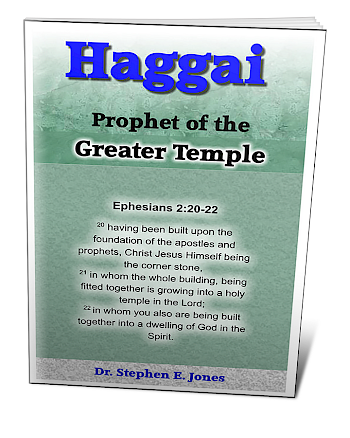Latest Posts
View the latest posts in an easy-to-read list format, with filtering options.

Haggai prophesied in the years after the end of Judah's captivity to Babylon. The first major project was to rebuild the temple in Jerusalem. This project actually prophesied of a greater temple that was yet to be built made of living stones.
Category - Bible Commentaries

Haggai 1:1 begins by saying,
1 In the second year of Darius the king, on the first day of the sixth month, the word of the Lord came by the prophet Haggai to Zerubbabel the son of Shealtiel, governor of Judah, and to Joshua the son of Jehozadak, the high priest, saying…
This “Darius” was Darius the Great—the Persian king—not Darius the Mede who took Babylon in 534 B.C. (Dan. 5:31). The first year of Darius the Great was in 521 B.C.
The 31st year of his reign (when Darius died) was in 491 B.C. His reign is established historically by a lunar eclipse that occurred on Nov. 19, 502 B.C. in his 20th year, and another on April 25, 491 B.C. in his 31st year. Hence, the dates of his reign are fixed by astronomy.
The temple was completed toward the end of the sixth year of Darius, as Ezra 6:15 tells us,
15 And this temple was completed on the third day of the month Adar [March]; it was the sixth year of the reign of King Darius.
The regnal year began on the first month in the spring; Adar was the 12th lunar month, near the end of his 6th year. Historians date Adar 3 that year as March 15, 515 B.C.
The word of the Lord came by Haggai the prophet and was directed to both Zerubbabel the governor and to Joshua the high priest in August of 520 B.C. (Darius’ second year). It was the first day of the 6th month, the traditional start of the 40 days leading to the Day of Atonement.
This 40-day period commemorated the 12 spies who spied out the land (Num. 14:34). Those spies returned and gave their report on the 50th Jubilee from Adam. However, because ten of them gave an evil report, they turned the Jubilee into the Day of Atonement. Instead of returning to their inheritance with rejoicing, as the Jubilee commanded, they turned it into a time of mourning with prayer and fasting for their lack of faith, demonstrated by their refusal to enter the Kingdom.
Significantly, then, Haggai’s prophecy begins here, suggesting that the people’s faith was again being tested. The difference is that in the time of Moses, the people were tested to see if they had the faith to enter the Kingdom. In Haggai’s time, the remnant had already returned to the Promised Land, but now they were tested to see if they would take up the work of building the temple.
Hag. 1:2 gives us the word of the Lord that they received:
2 Thus says the Lord of hosts, “This people says, ‘The time has not come, even the time for the house of the Lord to be rebuilt’.”
The foundation for the new temple had already been laid when the people first returned to Jerusalem in 534 B.C. Yet the work had stopped, due to Samaritan opposition. This gave rise to the belief that the temple would not be built until the Messiah came to restore all things, so it was useless to try to rebuild it earlier.
Strangely enough, they were right, but not in the way that they thought. The time for building the temple of living stones was indeed yet future and had to await the Mediator of the New Covenant. Their problem was that they did not know that they were supposed to build an interim temple as a pattern for something greater yet to come.
If they were aware of Daniel’s prophecy of the 70 weeks, then they may have argued that the Messiah’s coming was yet far off. Cyrus had issued his decree in 534 B.C., and this dispute arose just 14 years later in 520.
Actually, the 70 weeks did not begin its countdown until a second decree—the decree of Artaxerxes—that was issued in 458 B.C. But the people in Haggai’s day knew nothing of a second decree. From their perspective, the countdown of 490 years had already begun, and they were only 14 years into that cycle.
It is likely that the people in Haggai’s day believed that the Messiah would build the second temple, with wood and stone, perhaps by miraculous signs and wonders. It is highly unlikely that they would have discerned a spiritual temple, such as Paul described in Eph. 2:20-22, but yet they were correct in saying that the Messiah would build it.